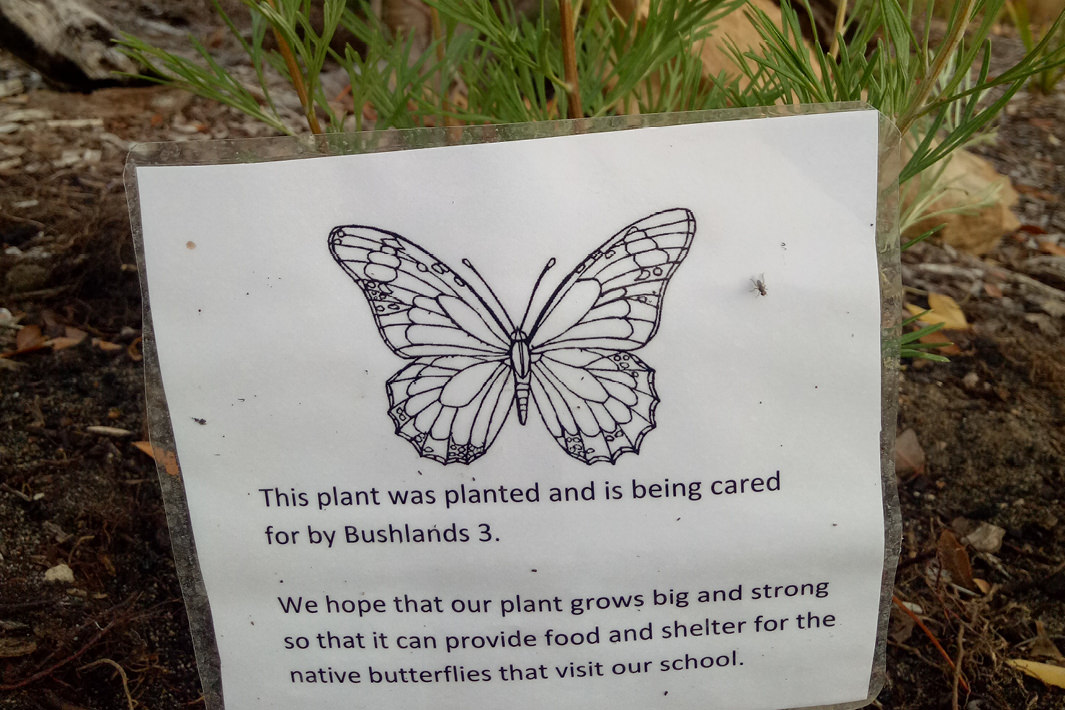CASE STUDY

Age Groups: 7-13
Grant Name:
School: South Coogee Primary School
Grant Sponsor: Woolworths
Project Overview:
South Coogee Primary School in Beeliar, Western Australia, headed up a district-wide Butterfly Garden project. With the assistance of a Woolworths Junior Landcare Grant, the school led 14 schools in the Cities of Cockburn and Fremantle to work together in establishing habitats for native butterfly species. Each butterfly-host garden that was planted helped to create a habitat corridor.
The butterfly garden project was also used as a way to raise awareness of the important role these species play in sustaining a healthy local eco-system. To further spread this knowledge, South Coogee Public School created a website with a range of educational resources to help schools and community groups initiate their own butterfly garden projects. The success of the project saw them receive interest from schools outside their district – and even as far afield as California, USA.
Environmental and educational outcomes
Thanks to the butterfly garden project, a corridor consisting of 14 new butterfly-host gardens was established. Positioning the gardens in schools ensured that they will be maintained for years to come.
South Coogee Primary School placed information signs throughout their butterfly garden. These were designed to be an enduring strategy for sustaining butterfly conservation as a priority in the school. Each sign includes an identification photograph, Noongar artwork of local butterfly species, Noongar names of butterflies, short descriptions of butterfly diets, behaviours and favourite habitats. The Noongar people are the original inhabitants of south-west Western Australia.
The school also produced a brochure about native butterflies. This was distributed to the families of all 14 participating schools. It included advice on how to establish or adapt their own butterfly-friendly garden.
The butterfly garden project offered multiple learning opportunities. South Coogee Primary School used the project to run a whole-school, cross-curriculum education program.
The garden enriched the children’s learning experience and encouraged creative thinking. This helps to answer state and national calls for a greater emphasis on STEM and creativity.
There were ample opportunities for the children to develop ‘real-life’ design and technology skills. This included butterfly farming, designing and building butterfly habitats, planning and planting, using digital technologies to record butterflies emerging from their chrysalis, and creating the project website.
Conclusion
In total, 800 students were involved in the multi-school butterfly garden project. At South Coogee Primary School, students were exposed to a wealth of knowledge about native butterflies. They also became emotionally invested in the outcomes of the project: particularly in following the butterflies they raised from eggs through to release.
“The Butterfly Garden Project offers purposeful STEM-based learning and produces outcomes that benefit the broader community.” South Coogee Primary School Principal, Lynette Beard.
 Teachers & Educators
Teachers & Educators Youth or Community Groups
Youth or Community Groups